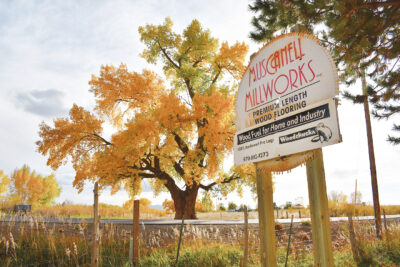Business activity varied over the last few months for secondary wood products manufacturers. Some truck trailer flooring businesses were busy, as well as moulding and millwork producers. Flooring manufacturers reported a slight improvement in sales. There has been a slowdown in the cabinet and furniture manufacturing sectors due to new residential construction being down both in Canada and the U.S.
Ash orders are good even though there is limited Ash being produced due to the Emerald Ash Borer having decimated most stands. Export markets for kiln-dried stock are good, especially to the Far East, with prices being slightly higher for some common grade items.
Basswood wholesalers and end users are restricting their purchases as demand for this species is slow. It is noted that supplies are ample to meet demand, with prices trending lower.
Cherry use is not very strong both here and in the U.S. border states by regular end users such as the flooring, furniture, moulding and millwork and cabinet sectors. Most sales are to the Chinese market with sales reported as holding up well since the beginning of the year.
Hickory is selling well with activity reported as decent, while some in the industry are experiencing slower business, with export sales low. Inventories have pretty much remained the same as sawmill production is low.
With warmer weather conditions, Whitewood logs are being sawn quickly to avoid stain damage. Markets for the regionally important Hard Maple are weak and there is ample production, even an oversupply of this species with price pushback being experienced.
Soft Maple is also not performing well, although it is moving better than Hard Maple at present but more effort is required to generate orders.
There has been an improvement in business for Oak residential flooring manufacturers since the beginning of the year, but it is not robust. It is challenging for them to obtain their raw materials as sawmill production remains low.
Sawmills and wholesalers state there is more interest in Red Oak from a wide range of buyers. The consumption of this species on both domestic and international markets has not grown much, but rather the low supply is fueling competition for available lumber. This has resulted in most grades and thicknesses moving well, including thicker stocks, which in turn has raised prices for Red Oak.
White Oak demand was consistent the past couple of months. Demand is stronger, but production has not kept up with the pace due to the weather struggles to get White Oak logs and the high competition from stave plants.
Green Poplar is moving well to wholesalers and millwork and moulding plants, say sawmill operators. Contacts note supplies of green Poplar have tightened, including common grades, and prices are edging higher. Kiln-dried Poplar is good on domestic markets with some improvement being felt in export markets.
Green Walnut volumes are improved, with wholesalers having ample supplies. There is interest in this species domestically, in the Far East and in China.
In March, the Bank of Canada opted against further interest rate hikes, despite a labor market, which over recent months has exceeded expectations, adding close to a quarter of a million jobs between October and January, stated the Conference Board of Canada in its Canadian Economics insight report. Alongside flat-lining GDP growth in the final quarter of 2022, the early March results signal that momentum may be waning and higher rates are working. The announcement by the Bank of Canada contrasted with the path set out by the Federal Reserve chair, who signalled the need for more rate rises in the U.S. The prospect of higher interest rates south of the border caused the U.S. dollar to strengthen, increasing the cost of imports for Canadians. Central bankers in Canada will be conscious that a widening gap between Canadian and U.S. interest rates risks devaluing the Canadian dollar further and stoking import-linked inflation.
Job vacancies in Canada are trending down, continued the report, indicating that Canada’s labor demand is moderating. The removal of most pandemic restrictions in the spring of 2022 led to a rehiring frenzy, pushing job vacancies to over a million. In December, this number had fallen to 750,000. While still roughly 50 percent higher than the pre-pandemic level, job vacancies are expected to fall further as higher interest rates cool the economy. Sky-high labor demand has helped to keep the unemployment rate close to record lows over recent months. However, as labor demand pressure subsides and high levels of immigration add to labor supply, the shifting demand-supply dynamics in the labor market will exert upward pressure on the unemployment rate over 2023.








